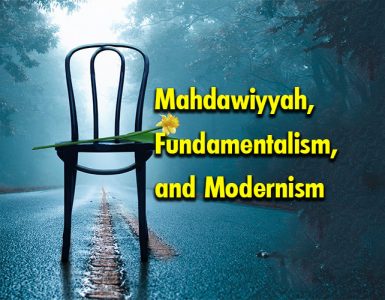Since Seyyed Hossein Nasr is one of the trusty followers of the Traditionalists, he believes in the existence of a close affinity between science and the sacred. He claims that the history of Islamic culture is replete with a connective relationship between spirituality and science, and that Islamic scientists have never believed in the existence of a rift between science and religiosity throughout the history of Islamic civilization, and that there is a relationship between the physical and non-physical world; however, during the Renaissance up till the modern age, any relationship between the sacred world and the material world has been severed as a result of the material world being awarded central position which had led to the non-physical world becoming denied or, at least, doubted. As a result, longitudinal worlds, once the belief of Islamic Gnostics, no longer command attention, and people make their own best to know the material world alone.
According to Nasr, modernity has confined truth to the material world level as far as the viewpoint of the intellectual is concerned, and because it has also become limited to this material level from the viewpoint of thinkers of modernism, so after the modern age, the majority of western researchers and orientalists will become unable to agree with each other. He says about it: Original difference between the Traditionalists and most of the other school of thinking, in relation to religious study, is resulted from their divergence of opinion about the nature of truth. Traditionalists do not validate the mutilated thinking about truth, which is nowadays predominant in the west, and which has originated from rationalism and empiricism prevalent after the European Middle Ages, and which provides the background for most religious research in academic circles. We should, however, remember that the opinion of the Traditionalists is the worldview which religions have created and developed up until the modern world down through the last thousand years.
After the Renaissance, scholars and orientalists applied the same historical methodology to Islamic culture, civilization, and sciences in their attempts to study Islamic works. On this basis they created a rift between the knowledge of Islamic scientists and spirituality paying no attention to the profound relation between these two as had been accepted by Islamic scholars and scientists. Therefore, Dr. Seyyed Hossein Nasr is critical of the orientalists’ inability to truly understand the relationship between the sacred and science in the Islamic civilization. He states: If the description of sacred science should be accepted, it becomes clear that, no branch of science in the Islamic civilization is separated from the sacred and man has always been in this domain whether he deals with Qanun al-Mas`udi or Ghiath ud-Din Jamshid Kashani’s Treatise on Arithmetic or Mulla Sadra’s Shawahid al-Rububiyyah. Of course, these works can be studied from the standpoint of worldly agnosticism and the separation of the divine element as it has been seen in the works of the majority of orientalists and their Muslim students.
He believes that many orientalists are unable to agree with the Islamic concepts simply because they do not have any sympathy towards it and, for many different factors, do not demonstrate any positive and sympathetic look to their studied culture: If a person wants to view a religion without any religious belief, he/she will not be able to agree with it, in the same way that you will experience some difficulty in observing a certain kind of music while being devoid of having any interest in it.



















Add comment